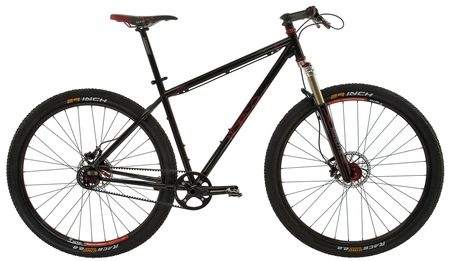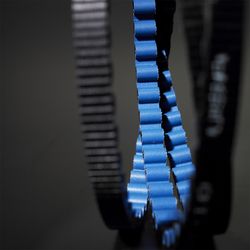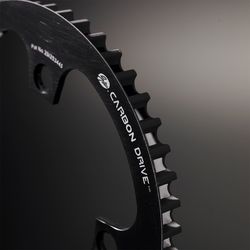
By
Last July, when Greg Martin rolled across the finish line to win the 2009 Singlespeed World Championships bike race in Canmore, Alberta, one thing was missing from the rig he'd pedaled for 24 hours straight: a bike chain. Martin was riding a bike equipped with a belt drive instead.
As innovations in the world of cycling go, the Carbon Belt Drive system from Gates, a company in Denver, could be a game changer. The humble bike chain–greasy, gunk-prone, finicky if not lubed and maintained–has been standard equipment for decades. But belt drives, which employ a flexible loop of polyurethane embedded with carbon-fiber cords, give bikers a new option.
Gates' belt drives () work with aluminum-alloy sprockets instead of traditional gears. It's a setup similar to what's long been employed on motorcycles. Indeed, Gates is a leading supplier of belts in the automotive industry, where its products are used by companies like Harley-Davidson.

For the past month, I have been test driving the belt-equipped Judan model from Norco (), a company based in Port Coquitlam, B.C. This tank of a bike includes 29-inch wheels and a steel frame. It weighs about 25 pounds and is a single-speed model with a front shock.
At $1,799, Norco sells the Judan in one configuration only. Its Gates Carbon Belt Drive is set up with a
46-tooth front sprocket and 28-tooth rear cog, which is about the equivalent to a 32-tooth by 20-tooth traditional chain drive.
It pedaled strong and–strangely–almost silently as I rolled onto a singletrack trail near my home. The belt drive cranked smoothly, and except for braking and wheels biting the dirt, there was almost no
noise.

Overall, the belt drive functioned little differently from a chain. It provides all the power of metal links, though with a few advantages. Mud clogging the chain is less of an issue with a belt drive. Gates touts its polyurethane belt as unlikely to stretch or break. Not having to lube a chain is a nice feature, too.
On ultra-light bikes, the Gates system is appealing, as it can shave ounces off total bike weight. A complete Gates belt-drive-and-sprockets system weighs a mere 240 grams.
For bike commuters, the belt drives might make even more sense. Ever arrived at school or work with a grease stain on the inside of your pants cuff? This won't happen with a grease-free belt drive.
Cost is significant, however. A Gates belt drive can add a couple hundred dollars to a bike's retail price.
But from world champion riders to workaday commuters, belt drives are catching on. Watch this year for more people pedaling carbon-embedded belts–and leaving the bike chain behind.
–Stephen Regenold is founder and editor of .